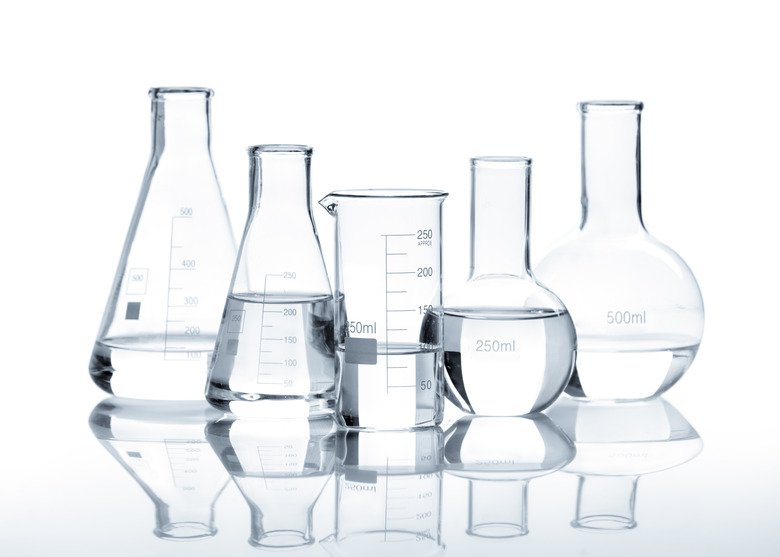How To Convert Density To A Specific Gravity
The density of a substance measures how much mass it has in a given volume. The formula for density is mass divided by volume:
\(D=\frac{m}{V}\)
Specific gravity is a ratio of the density of a substance to the density of a reference substance, usually water. Since the density of water is one gram per cubic centimeter, you calculate specific gravity by dividing the density of a substance by one gram per cubic centimeter. Since a number divided by one is itself, the specific gravity of a substance is the density absent the units of measure.
TL;DR (Too Long; Didn't Read)
To find the specific gravity of a substance, divide its density by that of water.
Find the Density
Find the Density
Determine the density of a substance. This may be done by dividing the mass by the volume of the substance or more directly through the use of instruments such as a hydrometer. For example, you measure the volume of a balloon as 2 liters and its weight (minus the weight of the rubber balloon) as 276 grams. This works out to 138 grams per liter or .138 grams per cc.
Divide by Density of Water
Divide by Density of Water
Divide the density of the substance by the density of water. Water has a density of one gram per cubic centimeter (1 g per cm3). Following the example, dividing .138 grams per cc by 1 gram per cc gives the unitless number, .138.
Quotient is Density
Quotient is Density
The quotient is the specific gravity of the substance. In the example, .138 is the specific gravity of helium.
Cite This Article
MLA
Chandler, David. "How To Convert Density To A Specific Gravity" sciencing.com, https://www.sciencing.com/convert-density-specific-gravity-5872275/. 13 December 2020.
APA
Chandler, David. (2020, December 13). How To Convert Density To A Specific Gravity. sciencing.com. Retrieved from https://www.sciencing.com/convert-density-specific-gravity-5872275/
Chicago
Chandler, David. How To Convert Density To A Specific Gravity last modified March 24, 2022. https://www.sciencing.com/convert-density-specific-gravity-5872275/
